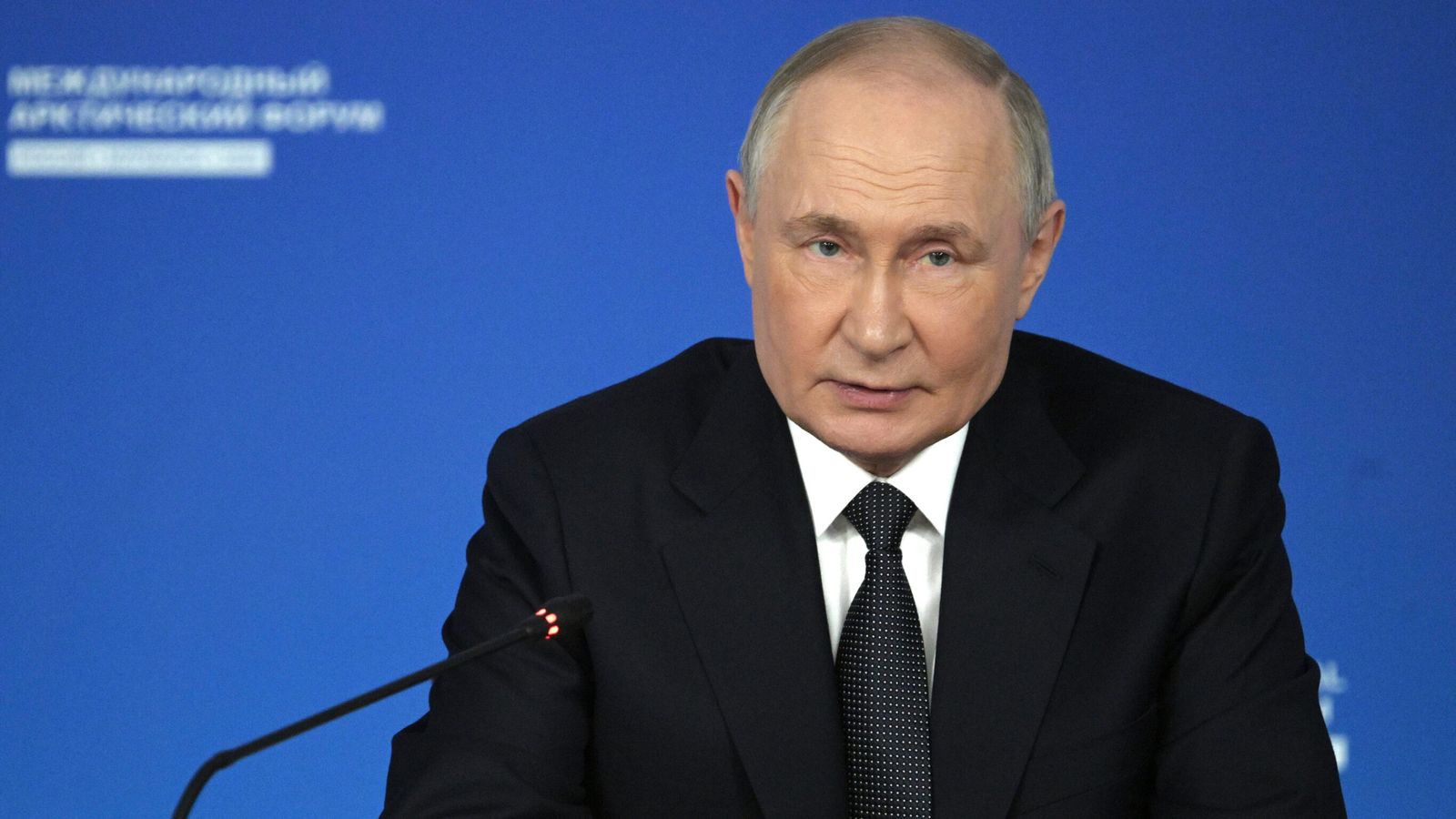Russia's Arctic Response: Putin's Concerns Over US Interest in Greenland
Russia is stepping up its military and infrastructure presence in the Arctic, fueled by concerns over growing US interest in the region, particularly in Greenland. President Vladimir Putin's recent comments highlight a growing strategic competition for control of this increasingly vital area. This heightened activity underscores the Arctic's geopolitical significance as climate change opens up new shipping routes and access to valuable resources.
Putin's Stance: A Response to Perceived Threat
President Putin has repeatedly voiced concerns about the United States' increasing engagement with Greenland, viewing it as a potential threat to Russia's strategic interests. While official statements often emphasize scientific research and economic development, underlying these pronouncements is a clear military dimension. The thawing Arctic ice cap is opening up new navigable waters, significantly reducing shipping times between Europe and Asia. This presents a lucrative opportunity, but also a strategic vulnerability. Control of these vital sea lanes and access to potentially rich mineral resources is at stake.
Russia's Arctic Build-Up: Military Modernization and Infrastructure Development
Russia's response to perceived US encroachment is multi-faceted:
- Military Modernization: Russia is upgrading its Arctic military infrastructure, including the deployment of advanced fighter jets, surface-to-air missile systems, and nuclear-powered icebreakers. These advancements significantly enhance its capability to project power in the region.
- Infrastructure Development: Significant investments are being made in upgrading ports, airfields, and radar stations along Russia's Arctic coastline. This expanded infrastructure allows for easier deployment and resupply of military assets.
- Enhanced Surveillance: Russia has bolstered its surveillance capabilities in the Arctic, deploying advanced radar systems and satellite monitoring to track activity in the region, particularly focusing on areas of increased US activity.
- Increased Military Exercises: Regular military exercises in the Arctic demonstrate Russia’s commitment to asserting its presence and deterring potential adversaries.
The Greenland Factor: A Geopolitical Pivot Point
Greenland's strategic location makes it a crucial element in this Arctic power play. Its proximity to North America and its vast reserves of natural resources make it an attractive target for both Russia and the US. While Greenland maintains its autonomy within the Kingdom of Denmark, its growing importance on the world stage cannot be ignored. Any significant US investment or military presence in Greenland is likely to be met with a strong counter-response from Russia.
The Implications of Arctic Competition:
The escalating competition for influence in the Arctic raises several crucial questions:
- Risk of Escalation: The potential for miscalculation and accidental escalation between Russia and the US in the Arctic is a serious concern. Clear communication and established protocols are vital to prevent unintended conflict.
- Environmental Concerns: The rush to exploit the Arctic's resources risks significant environmental damage. Balancing economic interests with environmental protection is a critical challenge.
- International Cooperation: Finding ways to foster international cooperation in the Arctic, rather than escalating competition, is essential for ensuring responsible resource management and peaceful coexistence.
Conclusion: A New Cold War in the Melting North?
The growing tension between Russia and the US in the Arctic mirrors the geopolitical struggles of the Cold War, but with a new context. Climate change has opened up previously inaccessible areas, creating new opportunities and exacerbating existing tensions. The future of the Arctic depends on the ability of global powers to manage their competing interests responsibly and prevent a new era of conflict in this fragile and vital region. The situation warrants close monitoring and proactive diplomatic efforts to mitigate risks and ensure a stable Arctic future.

